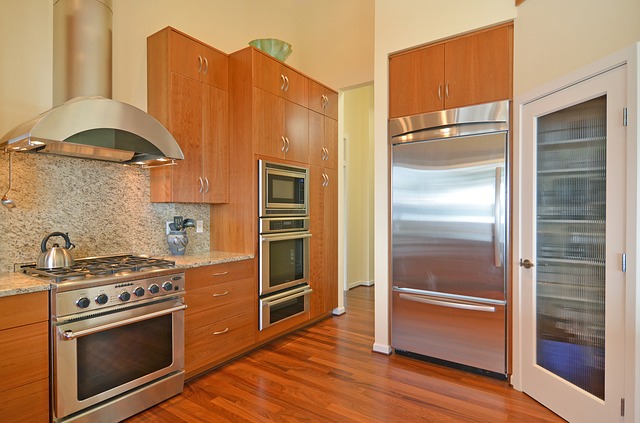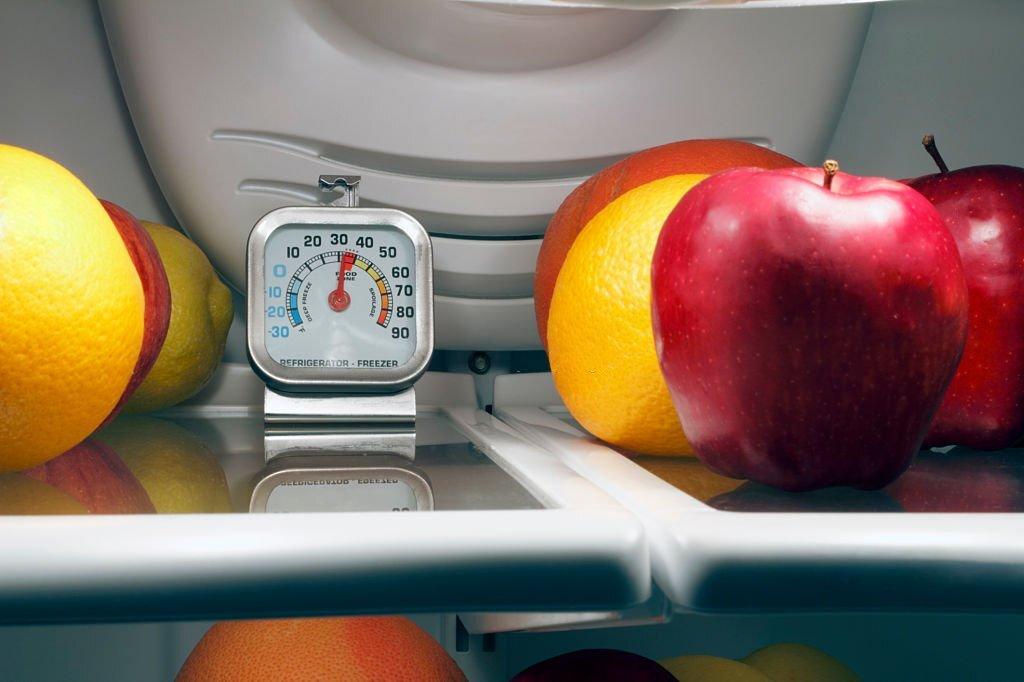How to defrost Samsung refrigerator?
Like all other refrigerators, Samsung refrigerators need to be defrosted after too much icing. But, the advanced features of these refrigerators have made defrosting much easier and more comfortable.
To defrost your Samsung refrigerator, you need to follow the given four basic steps:
- Press the Power Freeze & Fridge buttons simultaneously to start the Fd mode for defrosting.
- A beep sound indicates the defrosting cycle is running. The beep remains for 20-30 minutes until it completely defrosts the refrigerator.
- You can repeat the defrosting cycle if the ice remains after one cycle.
- Let the refrigerator cool to reach the ideal temperature of 40 degrees Fahrenheit.
Accumulation of ice in the refrigerator is irresistible. The reason is frequently opening the fridge door, which allows the outside, warm air to get into the refrigerator and get in touch with the evaporator coils resulting in ice formation.
So, we will discuss a complete guide to defrosting your Samsung refrigerator in no time. How to force defrost mode and what to do if defrost does not work? Let’s get into the details.
How to force defrost a Samsung refrigerator?
Modern Samsung fridges have a frost-free cycle in which you do not have to manually defrost your fridge by plugging it off or removing all your items from the refrigerator.
But, for forced defrosting a Samsung double door or single refrigerator, you have to follow the given instructions:
- Press the power freeze and fridge buttons together.
First, you have to press the Power freeze and fridge buttons at once and hold for 8 seconds until the Fridge defrost or Fd mode appears. After a blank screen.
For dispenser models, press the freezer and lighting buttons together for 8 seconds until the screen goes blank, then press any other button until Fd appears.
In addition, the same procedure is used to defrost a Samsung refrigerator icemaker.
- Beep sound
Starting the Fd mode will give a beep sound. The beep will continue until the completion of the cycle, i.e., for almost 20-30 minutes, depending upon the freezing. The beep indicates that the defrost cycle is running smoothly.
- Repeat the defrost cycle if needed.
After the first cycle, if you still notice ice hanging or accumulating to the walls and coils of the refrigerator, Run another cycle to defrost the fridge thoroughly.
- Reset & let the fridge cool and reach its actual temperature of 40℉.
After defrosting, you must disconnect from the main switch to reset. Clean any pooled water with a towel and let the refrigerator cool down.
A refrigerator usually takes 4-6 hours to reach the previous temperature after defrosting, depending upon the model and size.
Related: how long to cool a refrigerator
Samsung Refrigerator auto defrost.
Free Frost Samsung refrigerators are the recent models with an automatic defrost system. These refrigerators do not require any kind of manual defrosting.
A small unit called defrost heater is installed in the compartment panels, which melts the accumulated ice without interfering with the refrigerator’s other cooling cycles that keep the food fresh.
The defrost cycle in these refrigerators runs several times a day and removes the accumulated ice by the defrost heater, which becomes hot and melts ice.
How to manually defrost a Samsung refrigerator?
In case the defrost mode does not work, or your fridge is making a knocking noise due to the accumulated ice in the evaporator coils. You immediately need to defrost your fridge. Follow the given steps to quickly defrost your Samsung fridge manually:
- Turn off the refrigerator.
To avoid any harm or electric shocks, you must remember to turn off your fridge first. So, unplug from the main switch, or if your refrigerator is on extension cord, remove the switch from there as well.
- Open the fridge door and place a bucket for melted water.
Open the refrigerator door to defrost the ice. Place a towel or bucket for the melted ice. The warm air from outside will help to melt the ice quickly.
Do not use hot water or any metal object to remove ice. You can use a warm water spray or warm air to circulate over the ice for fast melting. A wooden or plastic spatula can also be used to remove ice.
- Remove the ice bin or ice tray.
Remove the ice tray if it is stuck due to excess ice. Let it thaw first. Otherwise, it might break or get damaged. Also, take off the glass shelves and other fridge drawers. Clean all the parts properly and carefully.
- Clean the fridge thoroughly.
After complete defrosting, clean the refrigerator with a towel or cloth thoroughly. Reassemble all the parts, plug in the switch and allow the fridge to cool again at its optimum temperature.
Do not forget to check the freezer drawers and evaporator fan coils. If any ice is stuck in them, remove it by keeping the fridge door open or placing a fan in front of the fridge to melt the ice. You can also clean your standard depth or counter depth refrigerators manually by this method.
What are Samsung defrost codes?
Samsung refrigerators have defrosted codes for easy understanding by the user. Let’s have a look at the Samsung refrigerator defrost codes:
- e- Defrost.
Some of the advanced models of single-door refrigerators have a built-in feature of e-defrost. This feature enables the user to defrost the freezer. You have to press the button for 3 seconds, and it will quickly remove the accumulated ice from the inner walls and coils of the fridge.
- Fd
On double-door refrigerators, the Force defrost is indicated as Fd. This mode activates all the electric heaters of the appliance.
How long does it take to defrost a Samsung fridge?
It only takes 20-30 minutes to defrost a Samsung fridge completely. However, a manual defrost might take 1-2 hours.
How to stop defrost in a Samsung refrigerator?
Just like activating the forced defrost, you can also stop the defrost by pressing the power freeze and fridge buttons together from the control panel. Hold the buttons until you reach the blank screen, and your fridge will return to its working mode.
Samsung Fridge defrost is not working.
Is your Samsung defrost causing problems and not working properly? Here are the actual reasons behind this:
- A defective defrost timer
- A damaged defrost control board mode
- A faulty defrost thermostat.
Any fault in the above components can halt the defrosting. You must call a technician to check this issue.
Can you defrost the Samsung refrigerator without turning it off the fridge?
No, you cannot turn off your refrigerator for a forced defrost. But, if you are defrosting your fridge manually, you must unplug the switch first.
How to reset defrost button on the Samsung refrigerator?
A Samsung fridge does not have a defrost button. However, you can reset the defrost by pressing the power freeze and other buttons from the control panel, which shuts off the defrost and then again setting the defrost mode equals resetting the defrost.
What causes a Samsung refrigerator to freeze up?
Various factors cause a refrigerator to freeze. A few are mentioned below:
- Keeping the refrigerator temperature low.
- Warm air from outside contact with inner coils builds ice.
- Keeping moisture items builds ice in the inner walls and roof of the fridge.
How to defrost a Samsung refrigerator FAQs
Where is defrost button in a Samsung refrigerator?
Samsung refrigerators do not have a defrost button. However, these refrigerators use defrost modes for removing ice. Am e- defrost, and Fd are the defrost modes of Samsung fridges.
What happens if you do not defrost your fridge?
The frost will build up the walls and roof of the refrigerator, slowing down the cooling process or may cause damage to the appliance. So, you must defrost your fridge when too much ice accumulates.
Final Thoughts
You can defrost Samsung refrigerator by pressing the power freeze and fridge buttons for 8 seconds, and when the display goes blank, press any other button until Fd appears. The beep sound, along Fd, indicates the Running of the defrost cycle.
After defrosting, unplug the fridge to reset it and then again start to cool the fridge. We hope the article helped you understand the defrosting process and time.






